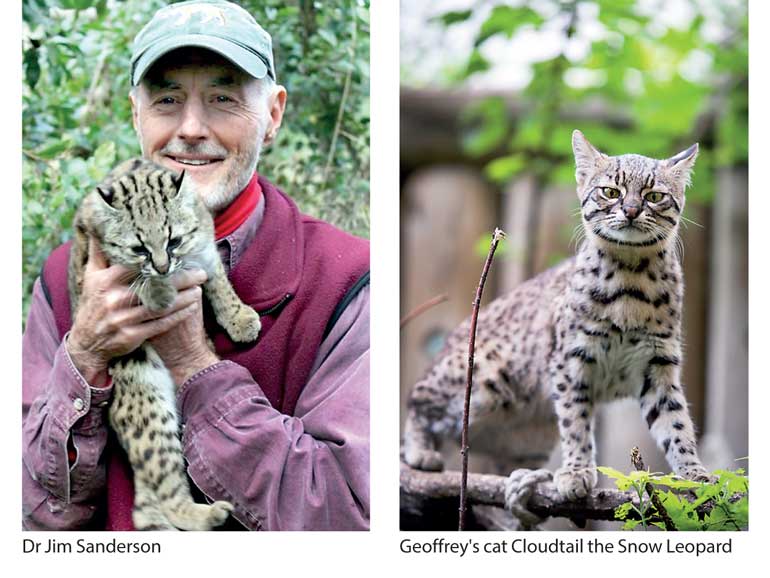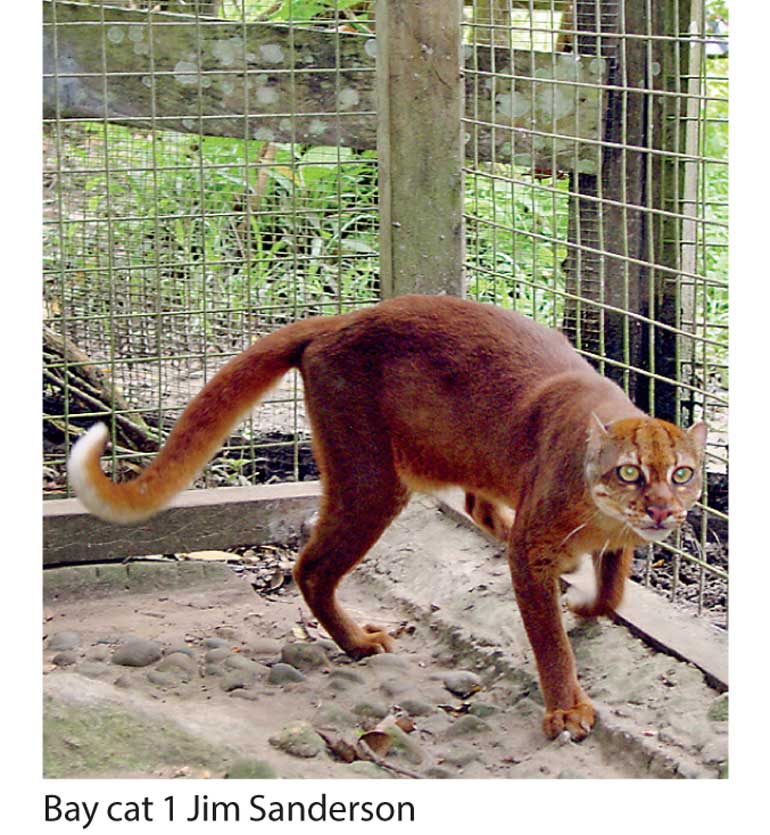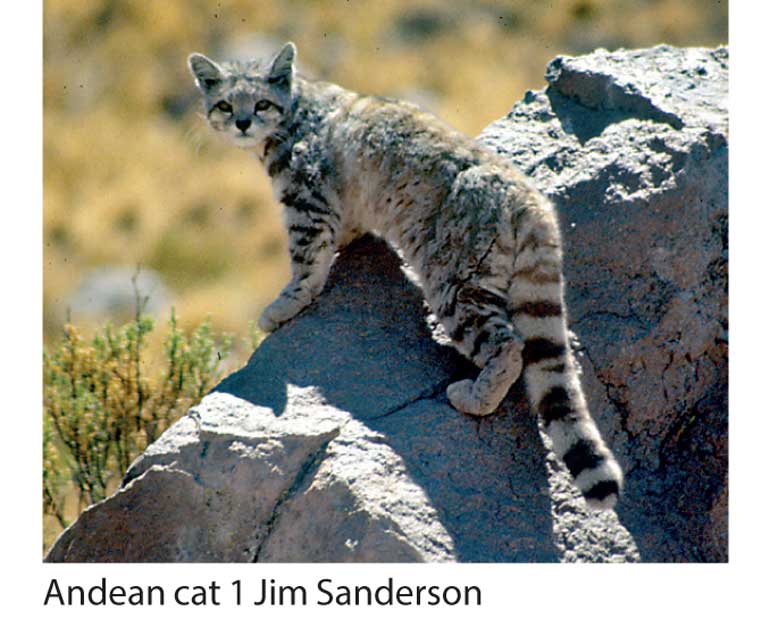Saturday Feb 15, 2025
Saturday Feb 15, 2025
Wednesday, 7 February 2018 00:00 - - {{hitsCtrl.values.hits}}




The Wildlife and Nature Protection Society (WNPS) will promote small wild cat conservation at its monthly lecture on 15 February at 6.00 p.m. at the Lotus Room of the BMICH, Bauddhaloka Mawatha, Colombo 7.
The speaker will be Dr. Jim Sanderson, the Program Manager for Wild Cat Conservation at Global Wildlife Conservation.
WNPS said there are 40 species of wild cats around the world, 33 of which can be considered small cats. The global authority on wild cats, Dr. Sanderson will discuss current conservation efforts, addressing threats to several species from South America to China and Sri Lanka.
“I begin with the overall strategy that is followed globally. What’s the threat, what’s the intervention, what variables do we monitor and then evaluate to make interventions more effective? There are similarities and differences in species conservation efforts and much depends on the country where we work. No single solution fits all. Our programs are long-term and constant vigilance is required. I will talk about current conservation efforts to mitigate threats to small wild cats around the world. Threat mitigation includes repairing hen houses, erecting warning signs along roads and working with local officials to prevent habitat destruction. Our strategy (Threats, Interventions, Monitoring, Evaluation (TIME)) is to begin by ranking threats, then creating and implementing mitigation strategies.”
Dr. Sanderson received a PhD from the University of New Mexico in 1976. He is the founder and director of the Small Wild Cat Conservation Foundation, a member of the IUCN Cat Specialist Group, a review board member of the Mohamed bin Zayed Species Conservation Fund and a Fellow of the Wildlife Conservation Network.
Dr. Sanderson’s mission is to ensure the survival of small wild cats and their natural habitats worldwide. This mission is achieved by working with local partners around the world to identify and mitigate threats to the world’s small wild cats. In 1996 Dr. Sanderson used radio-telemetry to better understand habitat fragmentation and landscape connectivity, and conservation issues of Guignas (Leopardus guigna) in Chile. With Bolivian and Chilean colleagues, Jim captured and radio-collared the first Andean cat in May, 2004. He has also used camera phototraps to survey wildlife populations and monitor biodiversity in South America, Africa, Asia and South East Asia.
Dr. Sanderson’s photographs of the Andean cat appeared in the February 2000 issue of National Geographic. With Chinese colleagues, Dr. Sanderson got the first pictures of the Chinese mountain cat in the wild. He has written four books and published more than 120 peer-reviewed journal articles. The monthly lecture is open to all members and non-members with admission being free of charge.
Discover Kapruka, the leading online shopping platform in Sri Lanka, where you can conveniently send Gifts and Flowers to your loved ones for any event including Valentine ’s Day. Explore a wide range of popular Shopping Categories on Kapruka, including Toys, Groceries, Electronics, Birthday Cakes, Fruits, Chocolates, Flower Bouquets, Clothing, Watches, Lingerie, Gift Sets and Jewellery. Also if you’re interested in selling with Kapruka, Partner Central by Kapruka is the best solution to start with. Moreover, through Kapruka Global Shop, you can also enjoy the convenience of purchasing products from renowned platforms like Amazon and eBay and have them delivered to Sri Lanka.
Discover Kapruka, the leading online shopping platform in Sri Lanka, where you can conveniently send Gifts and Flowers to your loved ones for any event including Valentine ’s Day. Explore a wide range of popular Shopping Categories on Kapruka, including Toys, Groceries, Electronics, Birthday Cakes, Fruits, Chocolates, Flower Bouquets, Clothing, Watches, Lingerie, Gift Sets and Jewellery. Also if you’re interested in selling with Kapruka, Partner Central by Kapruka is the best solution to start with. Moreover, through Kapruka Global Shop, you can also enjoy the convenience of purchasing products from renowned platforms like Amazon and eBay and have them delivered to Sri Lanka.